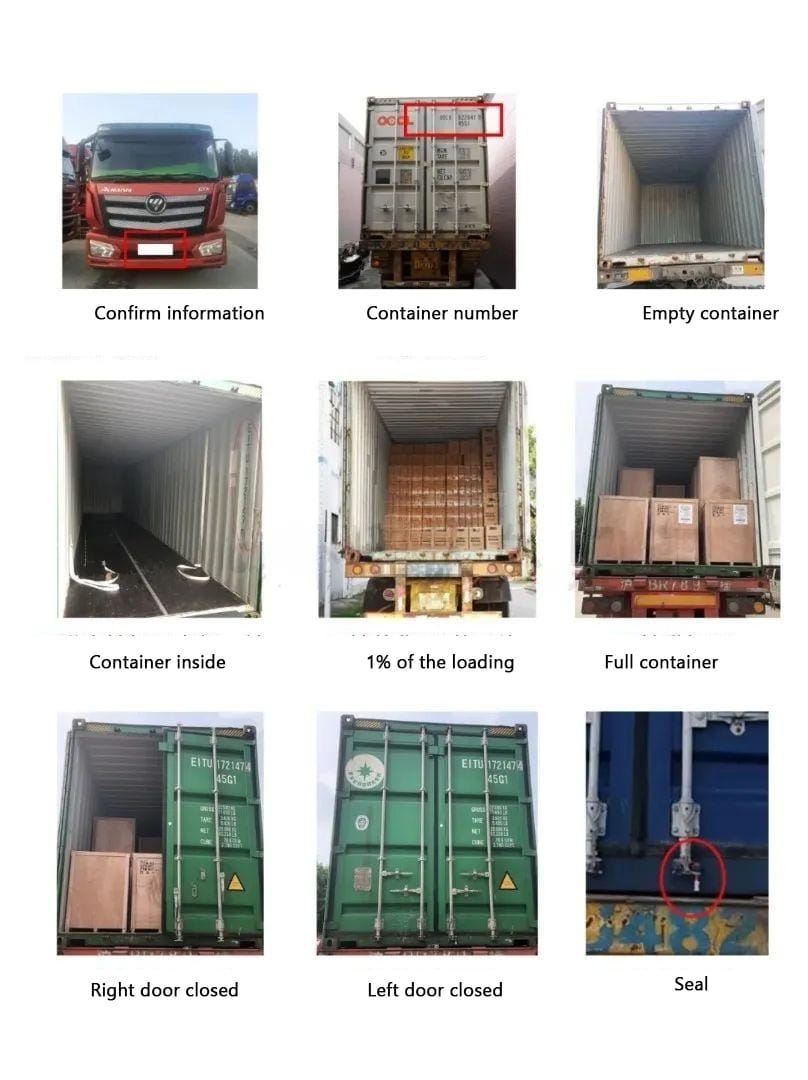When it comes to international shipping, ensuring that goods are properly packed and documented is key to smooth transportation and preventing potential disputes. One essential part of the export process is taking detailed photographs of the loading procedure. These photos serve as proof that the goods were packed securely and according to standards. Below are the key guidelines for taking the required loading photos for a container shipment:
- Empty Container Photos
- Empty Container with Closed Door at a 45° Angle
A photo of the empty container with its door closed at a 45-degree angle. This shot should clearly show the container number on the side and door, and the entire container should be visible. - Fully Opened Container
Take a photo of the fully opened container. Position yourself on the left side of the container, showing that it is empty and clean. The container’s number and door location should also be clearly visible.
- Loading Process Photos
- First Item Loaded
Capture a photo once the first item is loaded into the container. This should show the loading method, securing techniques, and the item’s placement. - Halfway Through Loading
Once the container is halfway loaded, take a photo that shows the container’s number above the door and the securing methods in use. It should also demonstrate the balance of the load. - Fully Loaded Container
After loading is complete, take a photo with the container door fully open. This photo should display how the goods are secured and the overall balance of the cargo inside the container.

- Closing and Sealing the Container
- Partially Closed Door
Take a photo with the right door of the container closed, showing the container’s number, and the left door remaining open. This will document the closure progress. - Fully Closed Door
Capture a photo of the fully closed container, showing the container’s number, as well as the sealed status. It’s important that the seal and the container number are clearly visible. - Close-Up of the Seal
After the container is sealed, take a close-up photo of the seal. This photo should clearly display the seal number for verification purposes.
- Container Identification
- Container Nameplate
A clear photo of the container’s nameplate is required. This helps verify the container’s identity and ensures it meets shipping standards. - Container Bottom Beam
A photo of the container’s bottom beam is essential. The photo should clearly show the condition of the bottom of the container to ensure it’s in good shape for transport.
- Additional Requirements
- Seal Position
Take a photo that shows the correct placement of the seal on the container door, confirming that it has been securely applied. - Cargo Photos
For certain cargo, especially items that are not in packaging (e.g., loose cargo), take a photo showing the goods inside the container. This ensures proper documentation for customs and potential claims.
Why These Photos Matter
The primary purpose of these photos is to provide a complete and clear record of the condition of the container and its cargo throughout the loading process. By following these guidelines and ensuring all necessary photographs are taken, you are protecting yourself and your customers from any disputes related to damage, loss, or shipping claims. These images will also help in maintaining transparency with all parties involved in the logistics chain, including shipping agents, customs authorities, and the end customer.
Conclusion
While it may seem tedious, taking the right photos during the container loading process is an essential step in ensuring smooth and efficient international shipping. By following these guidelines, you can ensure that your goods are properly documented and protected throughout the shipping journey.
